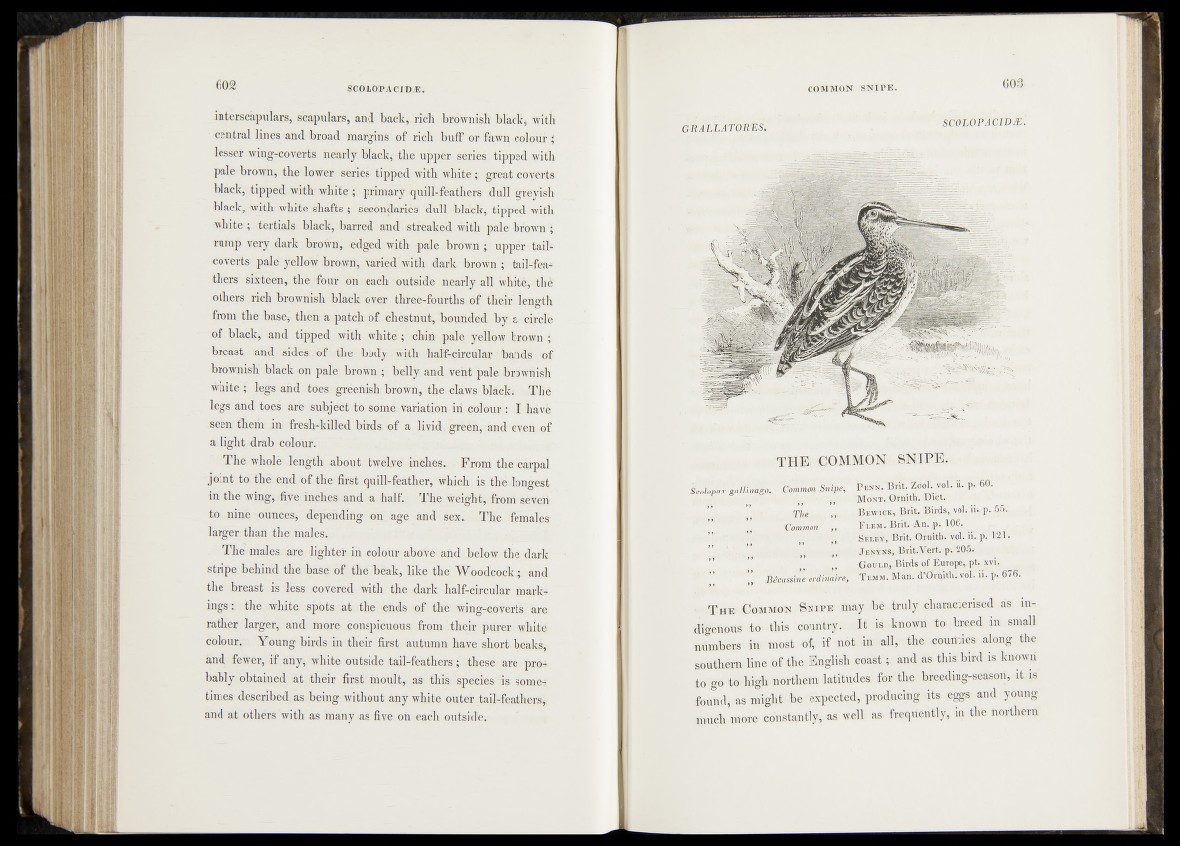
interscapulars, scapulars, and back,-rich brownish black, with
central lines and broad margins of rich buff or fawn colour £
lesser wing-coverts nearly black,-the upper series tipped with
pale brown, the lower series tipped with, white; great coverts
black, tipped with white ; primary quill-feathers dull greyish
black, with white, shafts ,- secondaries' 'dull - black, tippeckwith
white; tertials-black, barred and; streak^» with pale brown |
rump very dark brown, edged with q>ale brown uppe’r.tailr
coverts pale yellow brown, varied with dark brown:; tail-fea-*
thers sixteen, the ..four oh each outside nearly all white, thê'
others rich brownish black, over three-fourths of their! .length
from the baser tbêih a patch.■ of. chestnut, "bounded*^by. a. efrélè
of black, and tipped with white; chin- pale- yellow brown
breast and sides-. óf the bódy with half-Gifcular bahdfc~~of
brownish’ black on pale brown,?’ belly and vent pale brownish
white; legs and-toes'greenish brown, the-claws black: Thé
legs and toes are subject to some- variation id colour : I have
seen tlem in. fresh-killed birds of a livid, green, andre%rtn of
a light drab colour.
r The. whole length abou t twelve' in ches.- Prom tKé%%Epaï
joint to the end of the first quill-feather, which is thbs;Iongest
in the wing, -five inches and a half. The weight, from sèvert
to. nine ounces, depending on age and sex. The females
larger, than the .males;?
. The males . are lighter in colour abote and.,below the dark
stripe behind the base of the beak, like the Woodcock; and
the breast is less covered with the dark half-circular mark-#
ings ï the white -spots at the ends of the wing-coverts are
rather larger* and more conspicuous, from their purer white
colour,: Young, birds in their-first autumn have shortlbeaks,
and fewer, if any, white outside tail-feathers'4 . these are pro-#-
bably obtained at their first moult, as’ this species vis* gomes
times described, as being without, any white outer tail-feathers*
and at others with as many as five on each outside,
GRALLATOREi?:*■ R M SCOLOPAC1DX.
T H E SN IP E . .
p-60:
4 r "Mont. Ormth. Met..’
, TM •- jv Bswieg, B rit. Birds ,^/vo],, ii- p . 55.
„ F lem . Brit. An. p . J L 0 6 . ^ . I 1
5 ELEY, Brit. Ornith’; Vol.-ii. p .1 2 1 .
Brit.Vert, -p..205. k 4
Gould, Birds o | Europe, pt. xvi.
Man. d’Orinth.'-voi. ii. p. 676.
* T he.'Common Snipe may be truly characterised as indigenous
to- th ^ c o n n t r p It is, known to breed, in small
numbers in roost 6f f if not in all, the counties along the
■southern l i f t of the:, .English coast; and as this bird is known
to: go’ tQ high northern latitudes for;the,breeding-seasori, it is
found, as might be expected, producing its eggs and young
much more constantly? as well as frequently, in the northern